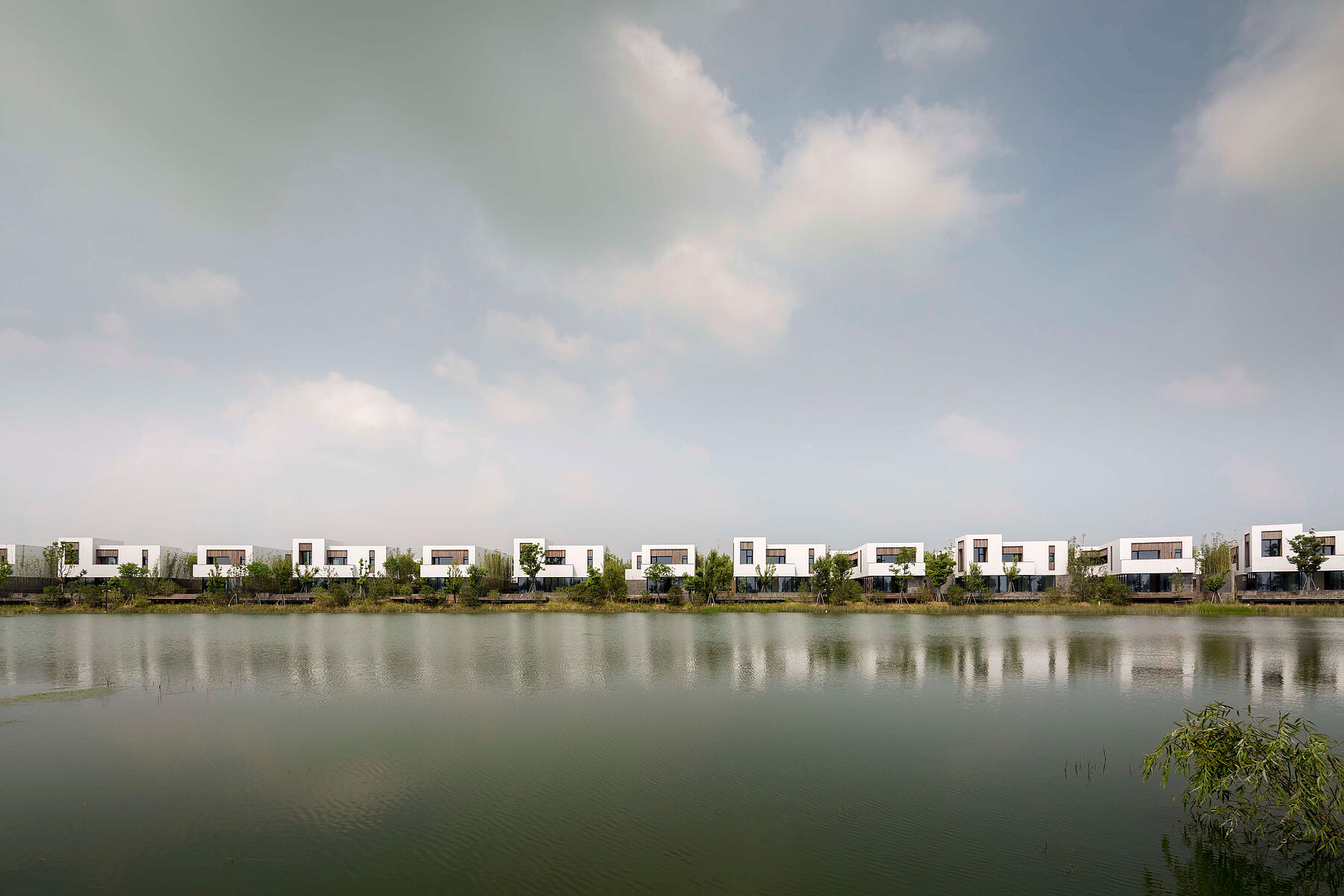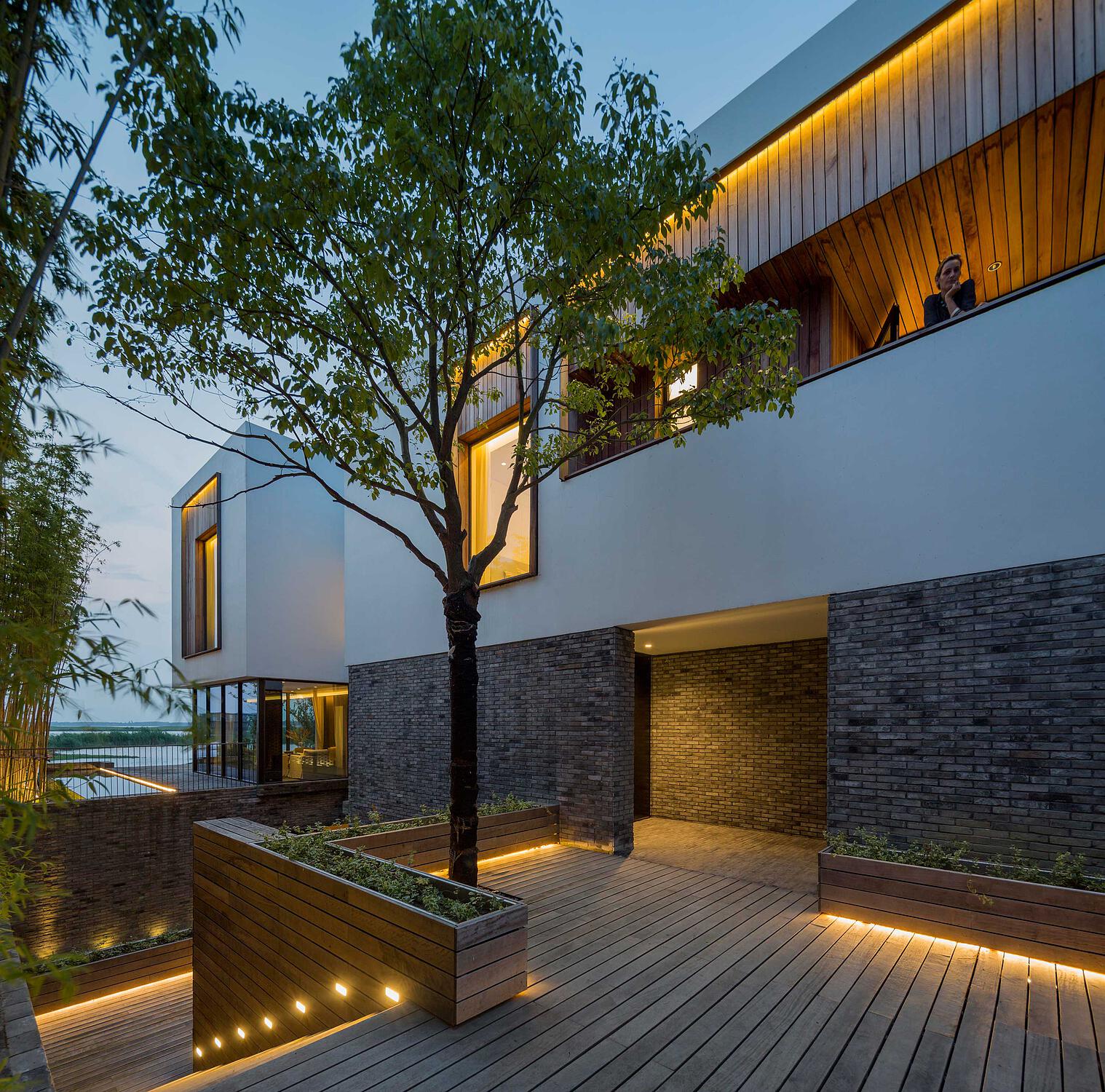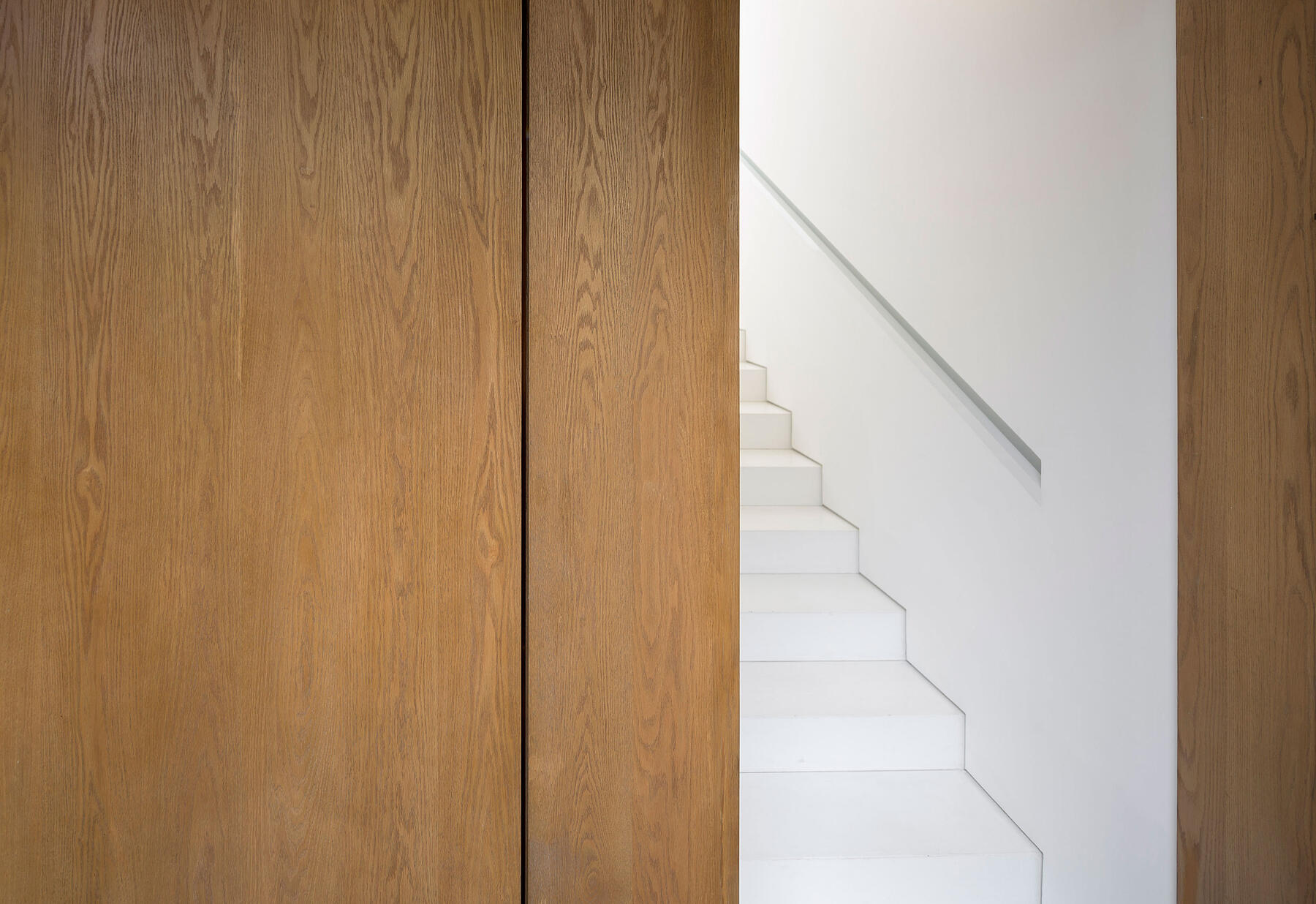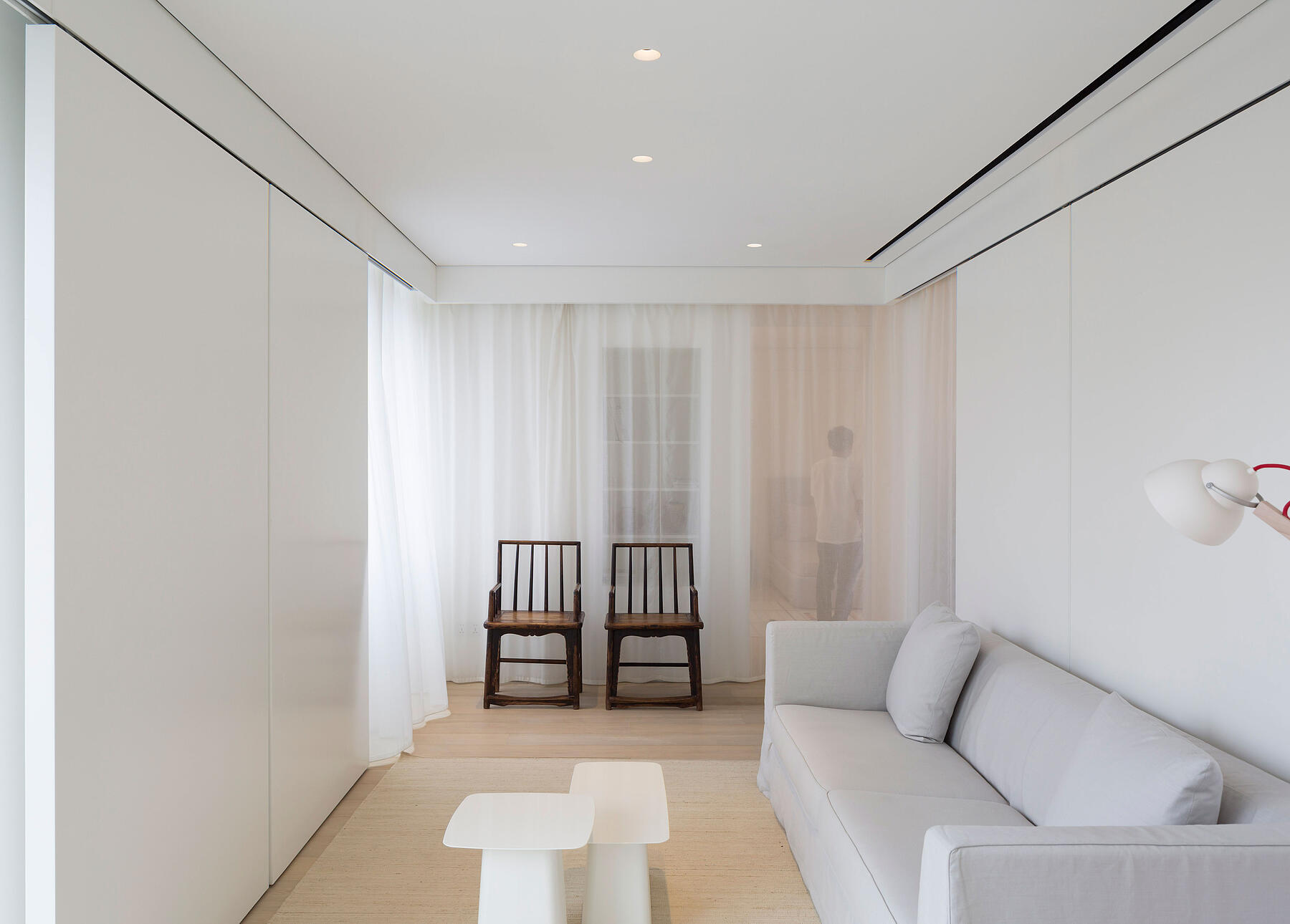Yangcheng Lake Villas
The vibrancy of China’s urban typologies lies in the variability of its elements, which reflects certain Chinese notions of communal living, or the village as extended family. Inheriting a master plan modeled after generic formations of suburbia, the challenge is to create a new paradigm of living that suits the modern Chinese lifestyle. The first move is to break down the solidity and singularity of the archetypical single family home into smaller units of living, which, when interwoven with landscape, circulation, and communal spaces, can begin to recall the vitality of Chinese living.
In a newly defined notion of suburban living, landscape can no longer be relegated solely to the realm of the outside or be defined merely as grassy lawns and manicured hedges. The organizing elements of classic Chinese gardens—path, threshold, center, and infinity—generate a sequential journey that interweaves interior with exterior, hardscape and softscape, natural and artificial, structured and organic.
Our lived environment must reflect the complex nature of our relationships--with our family, with our neighbors, with nature, and with ourselves--how we see or hope to be seen, how we come together with our cultural similarities and differences. The space we inhabit should allow for the dynamism of these ever-changing relationships while maintaining a stable underlay that is consistent, from which one can derive the comfort of “home.”
The interior design of the villas takes its cues from the architecture, which consists of two primary elements: the undulating brick walls at the base and the floating white boxes above. The clear delineation of materiality on the surface is also a signifier for the programmatic separation of public and private realms inside.
The traditional Chinese gray brick walls envelop the basement and first floor, to contain communal functions such as living, dining, gym and spa, tea room, and media room. The material palette of these spaces builds upon the basis of the rustic brick, complimenting it with rich blackened wood floors, natural warm oak walls, concrete render, neutral fabrics and leathers, plus accents of bronze and black steel. Hints of bright color and mirrored surfaces in the furniture pieces bring a touch of lightness to this robust and masculine space.
In contrast with the lower portion, the upper level houses the private functions including the family room, master suite, kid’s bedroom, and an additional guest room. The inside of the pure white volumes maintains a light palette of white paint, lacquer, sheer fabrics, white terrazzo, light stained oak, and brushed stainless steel. Series of movable panels and curtains allow the spaces to be reconfigured freely, while the layering of varying shades and textures of whiteness gives the space an overall airiness and softness that is meant to enhance the quality and comfort of these intimate rooms. The main furniture items in each space are quietly understated, while one-of-a-kind antiques, delicate embellishments, and various quirky accent pieces add to the vibrancy and lived-in quality of a true “home.”
Gross Area
30,000 m²
Status
Complete
Completion Date
September 2016
Duration
September 2011 – September 2016
Address
199 Yangchenghuan Road, Yangcheng Lake, Suzhou, Jiangsu















